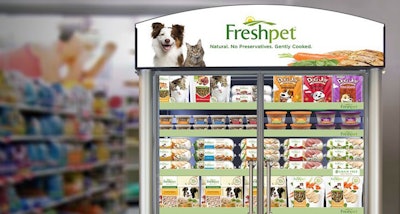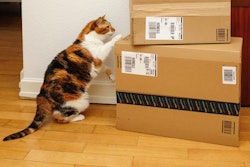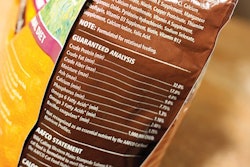
Premiumization has been driving pet food market sales and growth for some time now, especially in developed markets but also increasingly in developing ones. For example, the average price per kilogram of pet food sold in China had increased to 48 CNY (US$7.22) as of the first quarter of 2017, up from about CNY40.5 ($US6.08) just three years ago, according to GfK, thanks to a rise in sales of products like natural and grain-free.
Those are some of the same categories spurring growth in many other pet food markets, like the US, where Euromonitor says premium-priced dog and cat foods accounted for 61 percent of sales in 2016, and Western Europe, where sales have been stagnant but premium pet food is growing at least a little, at 1.7 percent a year. (That’s better than the decline seen in sales for economy and mid-priced pet foods.) In other developing regions, like Eastern Europe, natural and grain-free pet foods may not be as prevalent, but premium products are still increasing sales at nearly 6 percent a year, according to Euromonitor.
Premiumization: declining or just changing?
Premiumization is not guaranteed to last forever; some market watchers, such as John Gibbons of PetBusinessProfessor.com, have tracked pet food pricing to show that, in the US, prices have been dropping over the past year or so. Reasons include increased competition as well as the rising popularity of e-commerce, including for products like premium pet food. “Non-refrigerated, premium pet food may be the ideal internet product,” Gibbons commented to me, because pets need it every day (several times a day) and their owners can typically pay less for it online.
In a recent report, “Megatrend Analysis: Putting the Consumer at the Heart of Business,” Euromonitor characterized premiumization as one of eight megatrends transforming the global consumer landscape. Acknowledging that premiumization is not new, the report emphasized a change in motivation behind consumer purchasing decisions. “At its core, premiumization is about priorities. With more products available at more price points than ever before, consumers can spend more on the things that matter to them, while cutting back – often significantly – on those that do not.”
We often read or hear anecdotes about pet owners claiming to feed their pets better than themselves. This may especially be true for millennials and other younger pet owners who have grown up considering pets part of the family but may not yet have the earning power or income to buy higher-priced products – but they’ll make exceptions for their dogs or cats.
In fact, the mini case study for this megatrend in the Euromonitor report was about a pet food company: “Launched in 2006, Freshpet accounted for 8 percent of the premium wet dog food segment in 2016. The brand’s USP [unique selling proposition] is its perishable, chilled dog food which is merchandised in refrigerated coolers. Despite a substantial price premium, Freshpet doubled retail value sales between 2012–2016.”
Because of its core product, rather than focusing on the ecommerce route, Freshpet has gone mass market to expand sales. It’s now available in many discount and grocery stores in the US and UK, so pet owners in those markets can pick up the premium products while also stocking up on staples for their human family members – perhaps even spending more on the pet food than on their own food. After all, they have their priorities.



















